Simple Guide to the Kumbh Mela in India
The Kumbh Mela is the biggest religious gathering in the world – in 2013 over 120 million people attended. And in 2019, I joined the other 30 million that took the religious pilgrimage.
I was invited by the India Tourist Board to come along and experience the Hindu celebration thanks to my festival expertise. As a non-practising person, and just as a fellow human in fact, it was absolutely fascinating. Every Hindu is expected to visit the Kumbh Mela at least once in their lifetime. It’s a significant pilgrimage for worshippers the world over.
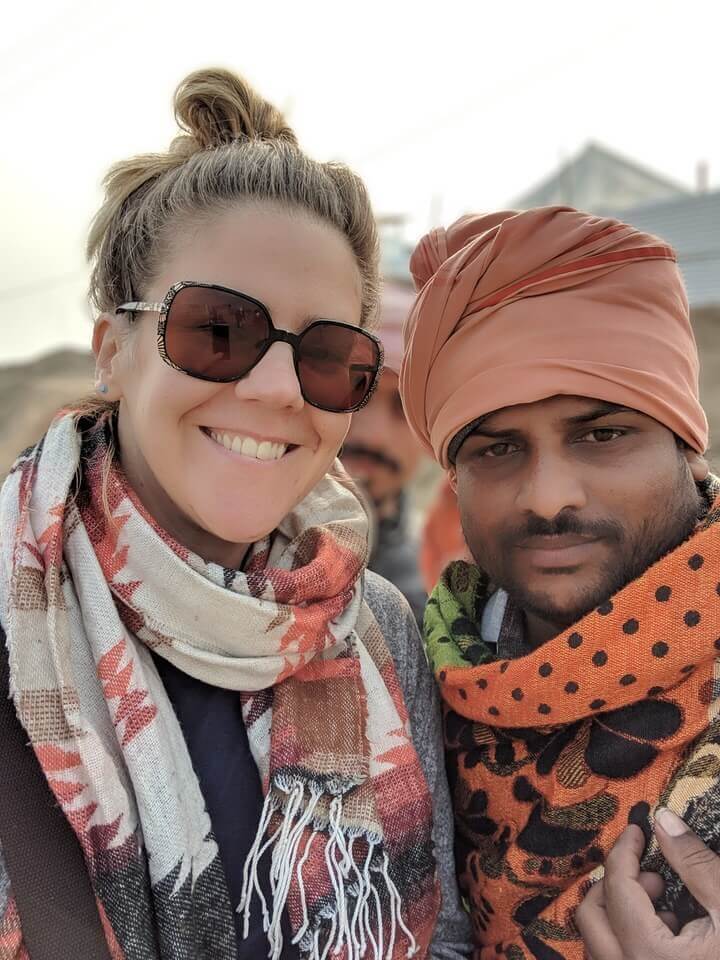
It took me a while to get my head around what the Kumbh Mela actually is, and the names of all the different sector and processes. I wanted to put together this guide to the Kumbh Mela to help you in your trip planning, or even just to show you what went down for the three days I was at the Kumbh Mela.
– Few facts about the Kumbh Mela
– What to do at the Kumbh Mela
– Why do people go to the Kumbh Mela?
– Toilet situation at the Kumbh Mela
– Where to sleep at the Kumbh Mela
– What to eat and drink at the Kumbh Mala
Few facts about the Kumbh Mela
– The Kumbh Mela is a pilgrimage. Hindus gather to bathe in points along the Ganges, Yamuna and mythical Saraswati Rivers.
– The Kumbh Mela takes place in India every three years. It works on a three year cycle, with the 12th year (the Mahakumbh Mela) being the most important, the 6th year (the Kumbh Mela) the second, and the third and ninth the least ‘important’.
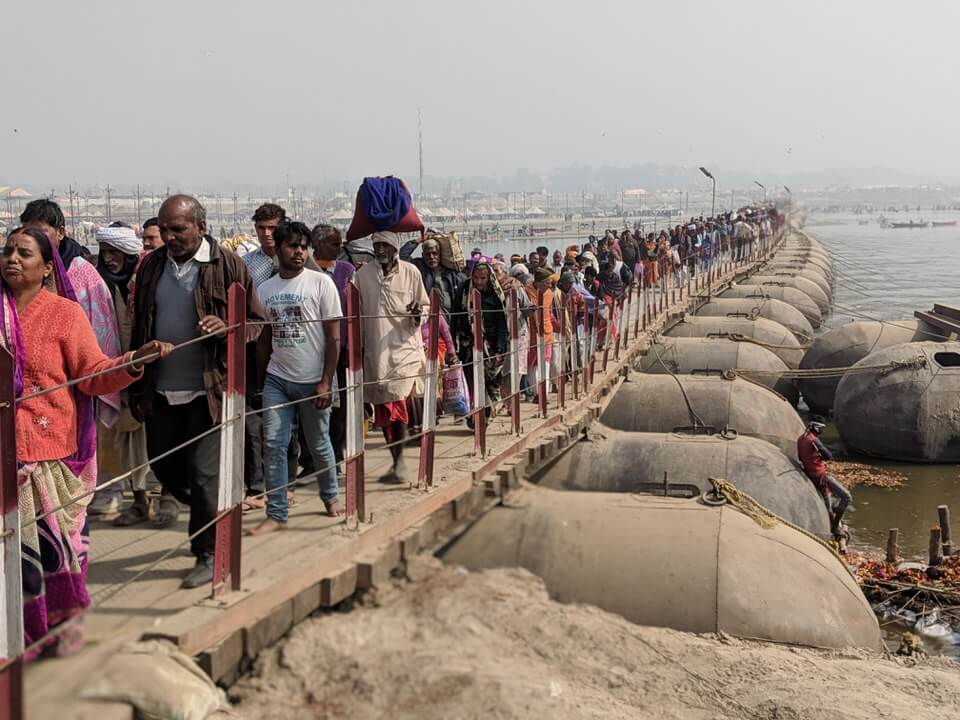
– Over 120 million were expected to attend over the 7 weeks it’s on in 2019. And 30 million in one day on the 4th February. In comparison, in 2018 Hajj in Saudi Arabia drew in 2.4 million.
– In 2019 it was held in Allahabad, the new name for Pryajah.
– The date, duration and location is decided by astrology.
– The Kumbh Mela is essentially a celebration for Hindus, but all are welcome.
– The sadhus – religious men – are one of the most important features of the festival.
– The Kumbh Mela gathering is so large, it can be seen from space. No exaggeration (so I’m told).
What to do at the Kumbh Mela
There didn’t seem to be any kind of definitive guide to what to do at the Kumbh Mela in India, well, not in English anyway.
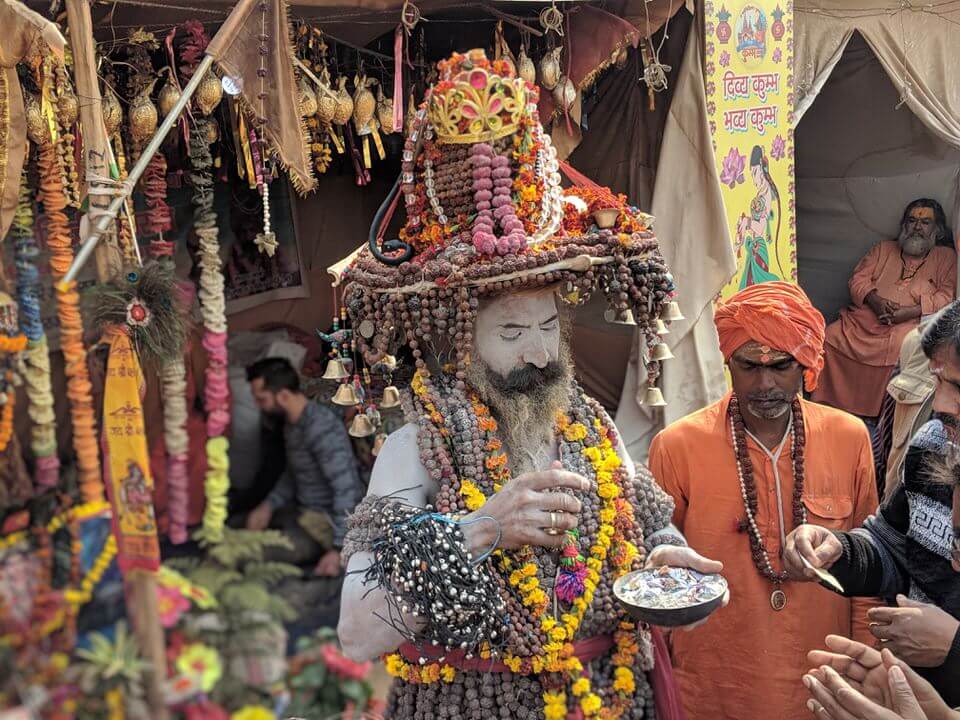
We wandered around, kinda aimlessly at first. Once we’d walked for a bit we got up the confidence to go into one of the tented areas and see what was happening. We just kinda followed people in. Unfortunately not speaking the language, or being able to read it, meant we were at a definite disadvantage.
Going to the Kumbh Mela is an opportunity to learn more about Hinduism, to meet the sadhus and to bathe in the Ganges.
Why do people go to the Kumbh Mela?
Basically the Kumbh Mela seemed to bring spiritual leaders and congregations together. Worshippers could go into the tents to see the sadhus, or spiritual leaders and to be with like minded people.
There are over 6000 religious and cultural organisations at the Kumbh Mela, all with their own tent villages set up.
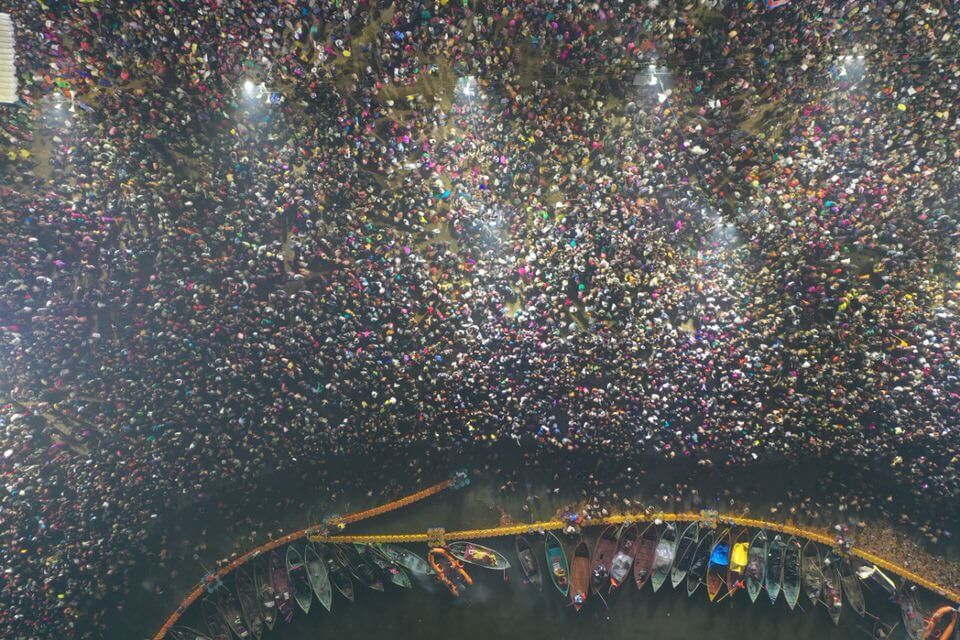
– Picture from Ajay Sood travelure.in
Allahabad is located in one of the holiest places in the world for Hindus. It’s where the three holiest rivers meet – where the Yamuna and the Saraswati meet the Ganga, or the Ganges as we know it. This spot is called the Sangam and has been an important point for pilgrims since the ancient times. The most important aspect of the Kumbh Mela is bathing in the Sangam.
2019 was spiritually unique as Jupiter entered the Taurus constellation at the same time when the sun and moon entered Capricorn. This meant that on the 4th February, just being at Kumbh and taking a dip in the Ganga was even more conducive to spiritual growth, as well as physical and emotional wellbeing.
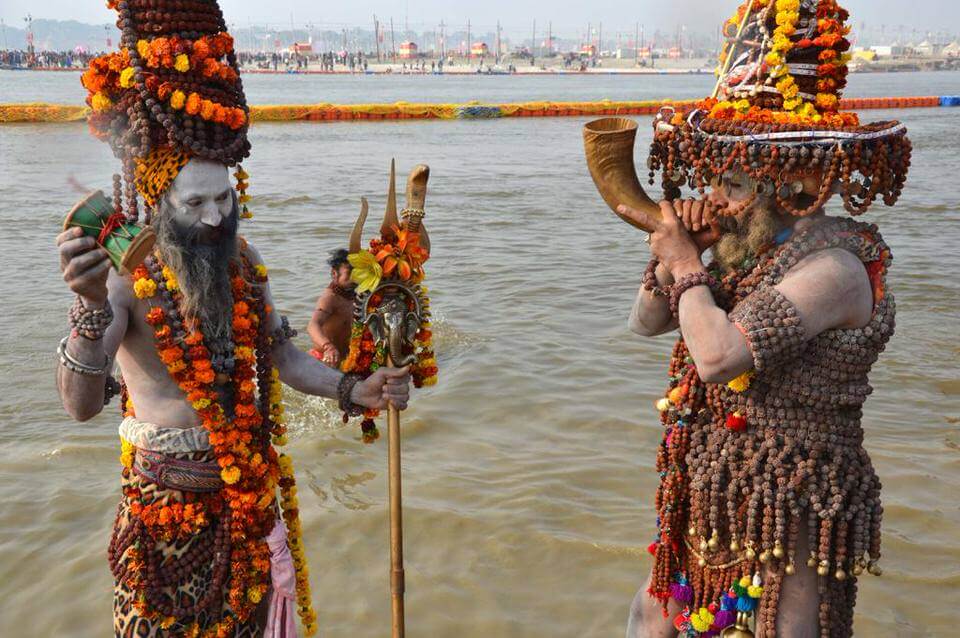
– Picture from Ajay Sood travelure.in
By bathing in the Ganges at this time Hindus’ sins will be cleansed and they will be one step closer to Moksha. Moksha is what sets them free from the cycle of birth and death.
The 4th February 2019 was known as the 2nd Royal Bath, the Mauni Amavasaya.
A ritual bath in the sacred waters while chanting, will alleviate you from all sins, miseries and sufferings of life. Hmmm, maybe I should’ve got in that freezing water then?
Where to sleep at the Kumbh Mela
We stayed at the Indrasputum Tent City, about 4km away from the heart of the Kumbh Mela. The tent was large, and the bed pretty comfy. I mean, it’s the best accommodation I’ve ever had for a field festival. We had a safe in the room where I could store my laptop and passport. The safe was locked in a large wardrobe which you could also lock.
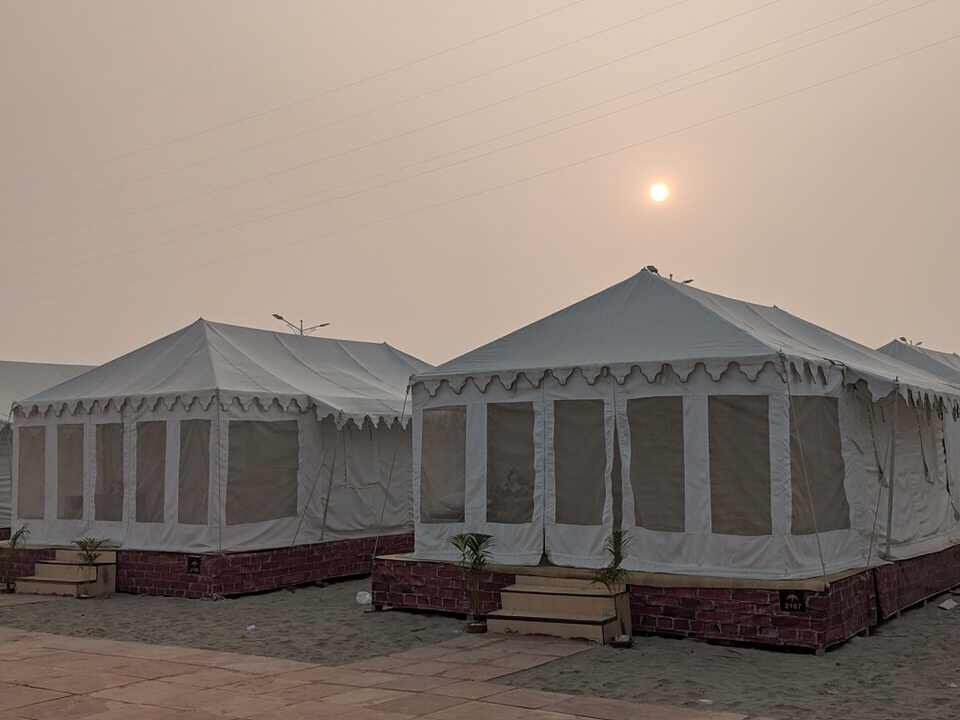
There was a restaurant on site, serving buffet food which was decent but soon went cold in the morning and evening freeze. It was all about the breads for me.
There were a few food stalls at Indrasputum Tent City, and I enjoyed a paneer tikka pizza with fries one day.
Stay and you get free WiFi throughout – although you’ll need an Indian number to get it to work. You’ll also get free transfers to the festival via rickshaw.
This was the only accommodation I experienced first hand.
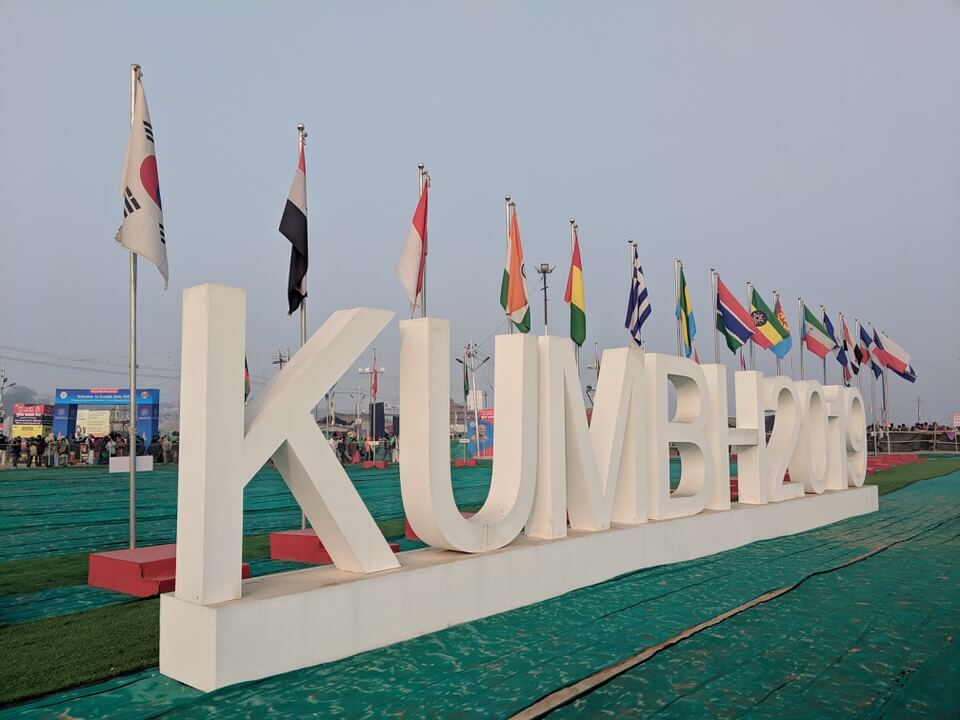
Just to warn you, February in Allahabad is cold at night and in the mornings. In fact, it was freezing overnight. Some other people had heaters but they’d ran out by the time they got to us. I tried to hotbox under my duvet instead.
Most of the pilgrims for the Kumbh Mela staying in DIY tents on the grounds. To be honest, I just don’t think I’d be strong enough to do that. I needed a bed after a day at the Kumbh Mela.
READ MORE: The Top Souvenirs from India
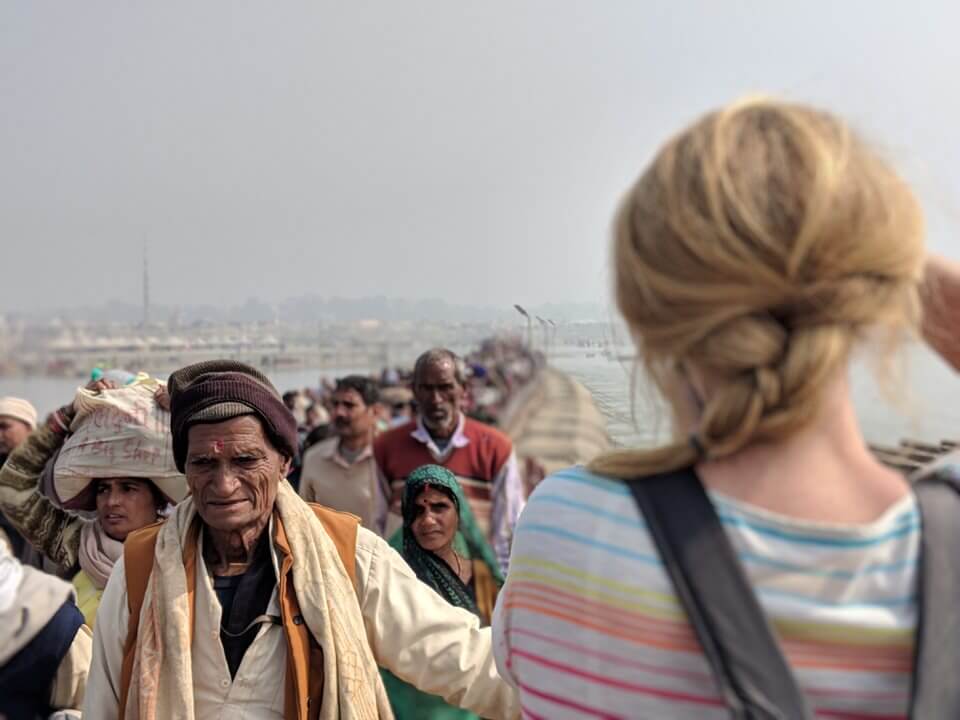
The festival prides itself on helping people with all budgets to enjoy the festival and for this reason there’s no charge to camp, and they also have a budget and a programme to feed those living in poverty who’ve made it.
There are plenty of tented villages / cities to suit your budget if you want some luxury for your trip.
Toilet situation at the Kumbh Mela
Luckily for me I had a private bathroom at the tent city, and the public toilets within the tent city complex were alright too. This meant that I didn’t actually use the toilets at the Kumbh Mela at all.
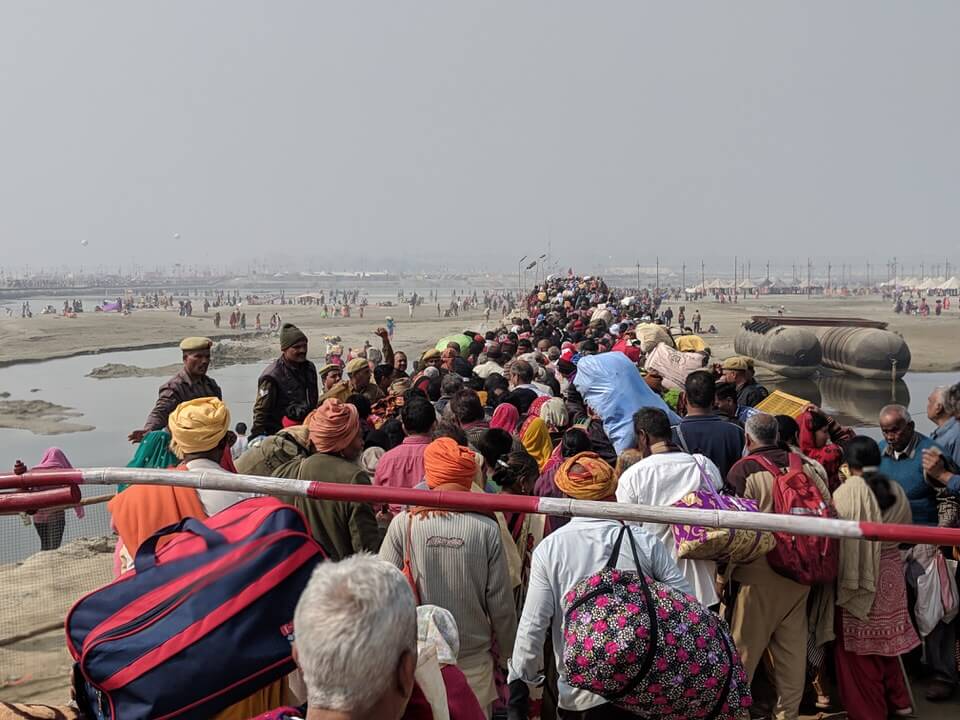
Yep, lasted from 8am to 4pm on one day without going once. I think at home I go once an hour I drink that much water but I stayed off it for this trip.
Friends went and said the toilets at the Kumbh Mela were alright though, and from the outside they just looked like your average portaloo. Over 122,000 toilets were built for the Kumbh Mela. The amount of toilets at the Kumbh Mela are something they’re quite proud of. Apparently you’ll never be more than 25 metres from one.
Just remember to take your own toilet roll.
READ MORE: What is India Most Famous For?
What to eat and drink at the Kumbh Mela
Although we had food at the tent city I did want to try some at the festival. Unfortunately it wasn’t quite like a festival like you might be used to in the west. Each congregation would give out food to its worshippers and you’d see queues of people lining up. Obviously that wasn’t for us white non-believers.
There were lots of stands selling biscuits and nuts, and nut bars though.
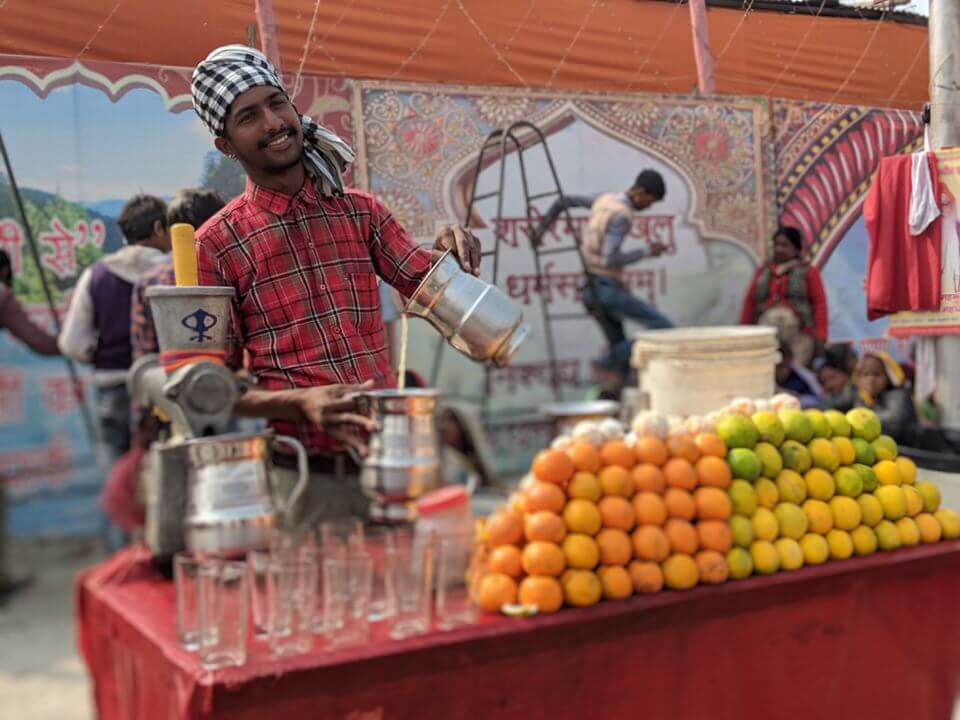
We stopped at a chai stand for some tea and biscuits. It was nice to have a sit down and to try and talk in any way to the stallholders. We ended up having two cups of chai each (three of us) and a packet of biscuits and it came to 125 rupees, although he gave me change for 200, which I let go.
We also tried some freshly squeezed orange juice off a guy. Unfortunately as I put my lips to the glass I remembered the last time I was in India, and being horribly ill, and so I couldn’t enjoy it. I only drank a tiny bit and gave it him back. He wasn’t happy.
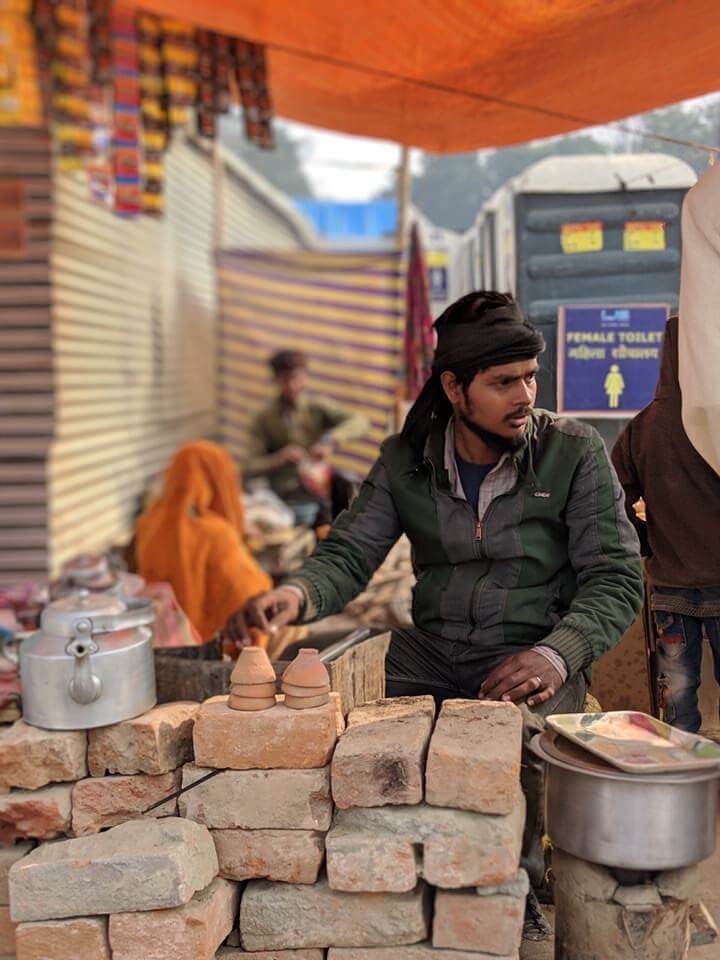
Being a Hindu festival the Kumbh Mela is a completely dry festival and you won’t find alcohol anywhere in the grounds.
Top tips for the Kumbh Mela Festival
Remember that this is a festival for 30 million people, meaning it gets really busy. A few years ago they had problems with overcrowding and so measures have been put in place – these include shutting off bridges so you have to be patient and wait to get round.
The site is huge. Keep an eye on the bridges as you go around so you know which bridge to get back on. We got totally lost on day two and ended up having a three-hour adventure we didn’t really want.
Carry a map. After getting totally lost on our big day out we decided that as long we got to the other side of the bridge, we’d be alright. This was not a good decision. We ended up having to cross three bridges, because of the way the festival ground is set up, and it took us three hours to get back again. And that included a rip off ride in a rickshaw.
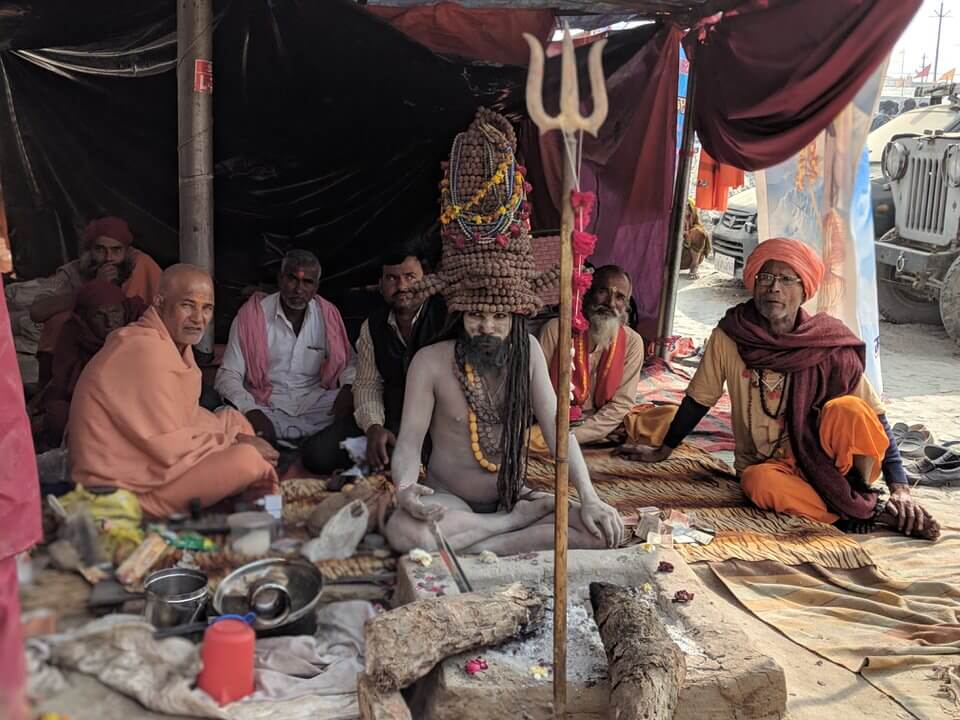
Make some time to talk to the sadhus. They’re the super spiritual followers – one level up from monks – who come down from their Himalayan retreats to share their spirituality with their followers. You can pay to ask them questions about life, or just to sit with them. They’re naked and covered in ash, just so you know.
The Kumbh Mela is dusty and hectic. People get lost and although I couldn’t understand the announcements I was told later that a lot of them were to do with missing people. If you’re going to the Kumbh Mela, stick with your friends and don’t get lost!
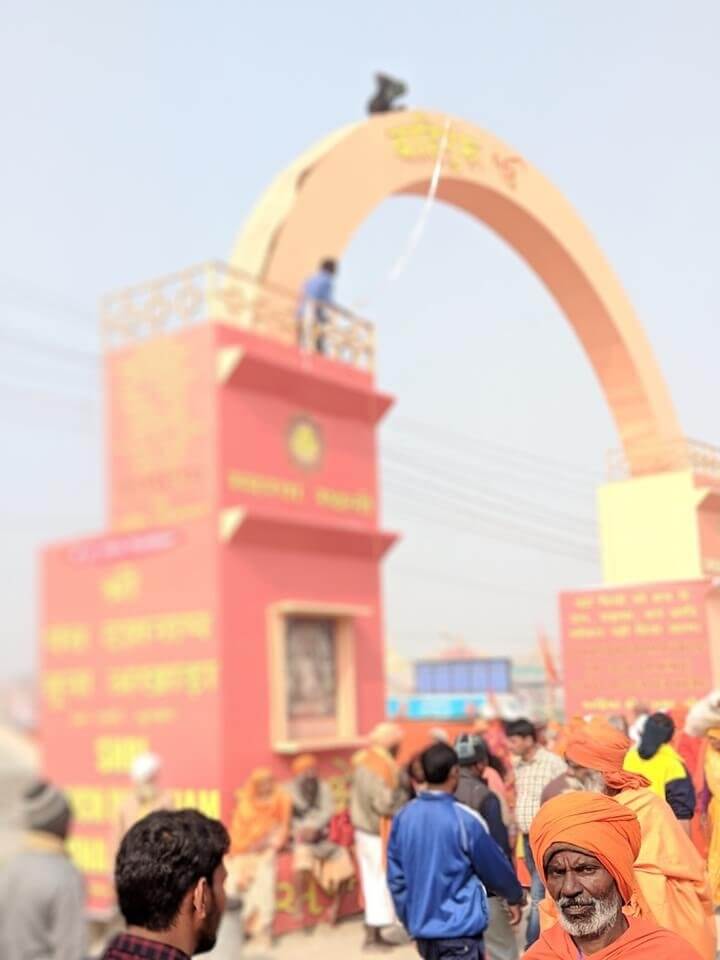
I was at the Kumbh Mela in February 2019. It ran from the 15th January to the 4th March in Prayagraj (formally Allahabad). The trip was sponsored by India and Uttar Pradesh tourism. Everything in this post I believe to be right, but it’s hard to understand an entire religion and festival in 3 days. Feel free to let me know if I’m wrong!
Listen to my podcast!
I caught up with Ellie, who runs the travel blog Wandering Quinn. She’d just spent four months in India and travelled around extensively. If you want to learn more about India before your trip, have a listen on Spotify.
Or here on iTunes.

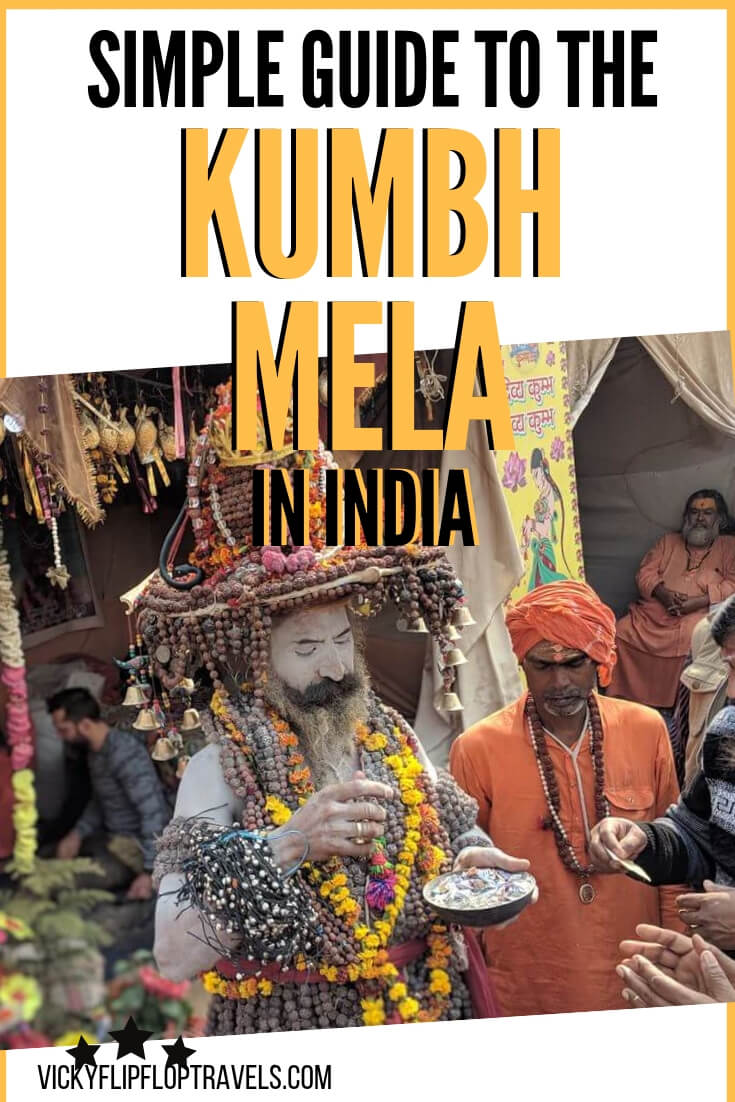
It’s really treat to read such a wonderful blog about Kumbh Mela. It’s a holy occasion where have been once and came to know about this deeply. However you have explained the whole story perfectly and made easy for the travelers around the world
Oh wow, I’m glad you think so and thank you for taking the time to leave a comment. The Kumbh Mela was one of the most memorable experiences of my life and I’ll always feel honoured that I was invited to experience it.